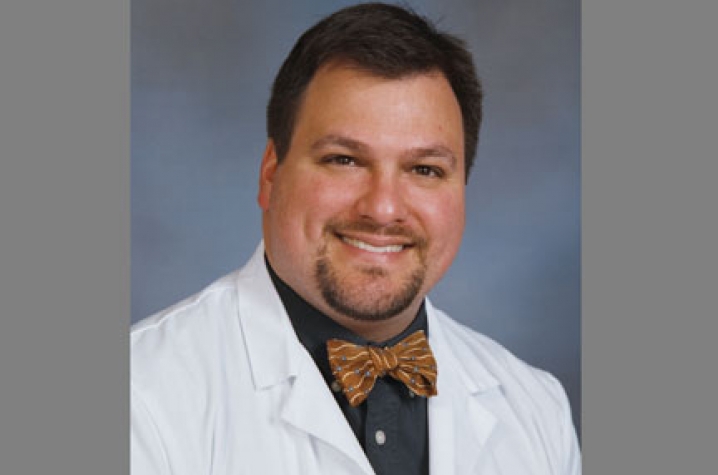Safe Tanning Recommendations for Spring and Summer

LEXINGTON, Ky. (April 23, 2010) – Most people love being outdoors in the sun on a beautiful day, but it’s important to understand the risks of too much sun exposure. Hats and sunglasses can provide protectection, but that is not the only protection you need, according to Dr. John D'Orazio, assistant professor of pediatrics, hematology-oncology division, University of Kentucky College of Medicine, and a pediatric hematologist-oncologist at Kentucky Children's Hospital.
"A little sun is good for us; a lot is dangerous. That’s where sun safety comes in."
Being sun safe is really a matter of common sense. Here are some basic tips.
- Know how sun sensitive you are. If you’re a fair-skinned person who burns easily when out in the sun, then these tips are especially important for you.
- Likewise, the younger you are, the more sun protection you should have. Babies and children are particularly sensitive to the sun.
- Apply sunscreen with a sun protection factor (SPF) of 15 or greater 30 minutes before sun exposure and then every few hours thereafter. Choose sunscreens that offer protection against both UV-A and UV-B.
- Seek shade as much as possible when outside.
- Do not let yourself get a sunburn.
- Wear sunglasses with total UV protection to protect your eyes from UV radiation.
- Wear wide-brimmed hats, long-sleeved shirts and pants.
- Avoid direct sun exposure as much as possible during peak UV radiation hours between 10 a.m. and 3 p.m.
- Perform skin self-exams regularly; if you notice any changes or new growths, see a dermatologist or other care provider right away.
- Eighty percent of a person's lifetime sun exposure is acquired before age 18. As a parent, be a good role model and foster skin cancer prevention habits in your child.
- Avoid tanning beds; their UV strength is at least twice that of direct sunlight. Spray-on tans seem to be much safer.
At the UK Markey Cancer Center, D'Orazio and his research team study how the skin interacts with the ultraviolet radiation found in sunlight. Their research goals are to develop safe ways to achieve a natural tan and new ways to minimize the danger of sun exposure on the skin.
D’Orazio's basic science research aim is to prevent many cases of skin cancer by repairing a defect in the chemical pathway that tells cells which kind of melanin (pigment) to produce. D’Orazio and his team can regularly turn “blond” mice dark by forcing the skin to make melanin, the pigment responsible for a natural tan. "It might be possible one day to use a similar approach in people, allowing natural tanning without the built-in risks of skin cancer that come with being out in the sun or in tanning salons," he said.
Melanoma is the most common cancer in young adults between ages 20 and 30, and the primary cause of cancer death in women between 25 and 30. Pigmentation plays a big role in skin cancer. “If you’re dark skinned, your skin is loaded with melanin which acts as a natural, built-in sun block. So the darker your skin, the less you have to worry about sunburn or skin cancer," he said. However, those who are fair-skinned, absolutely need to worry about sun safety. "And the younger you are, the more sensitive your skin is to the damaging effects of the sun, he said.
Why zero pigment equals zero melanoma was the driving question behind D'Orazio's work in David Fisher’s lab at the Dana-Farber Cancer Institute in Boston before he came to UK four years ago. This research led to a landmark September 2006 paper in Nature thatdemonstrated an experimental lotion could protect “fair skinned” mice against UV damage.
“Skin rich in melanin absorbs the UV light before it can get down to the danger zone where melanocytes live,” D'Orazio said. Skin cancer occurs when UV light mutates cells in the danger zone. Melanin is a natural sunscreen because it’s not something you apply. It’s in your skin and the more you have, the better protected you are from UV radiation. “Our lab studies how melanin is made in the skin, and what signals enhance its production, which would protect against sun damage in the skin.”
For more information about D'Orazio's research, contact him at jdorazio@uky.edu or (859) 323-6328.
For more information about the children's hospital, go to Kentucky Children's Hospital.




